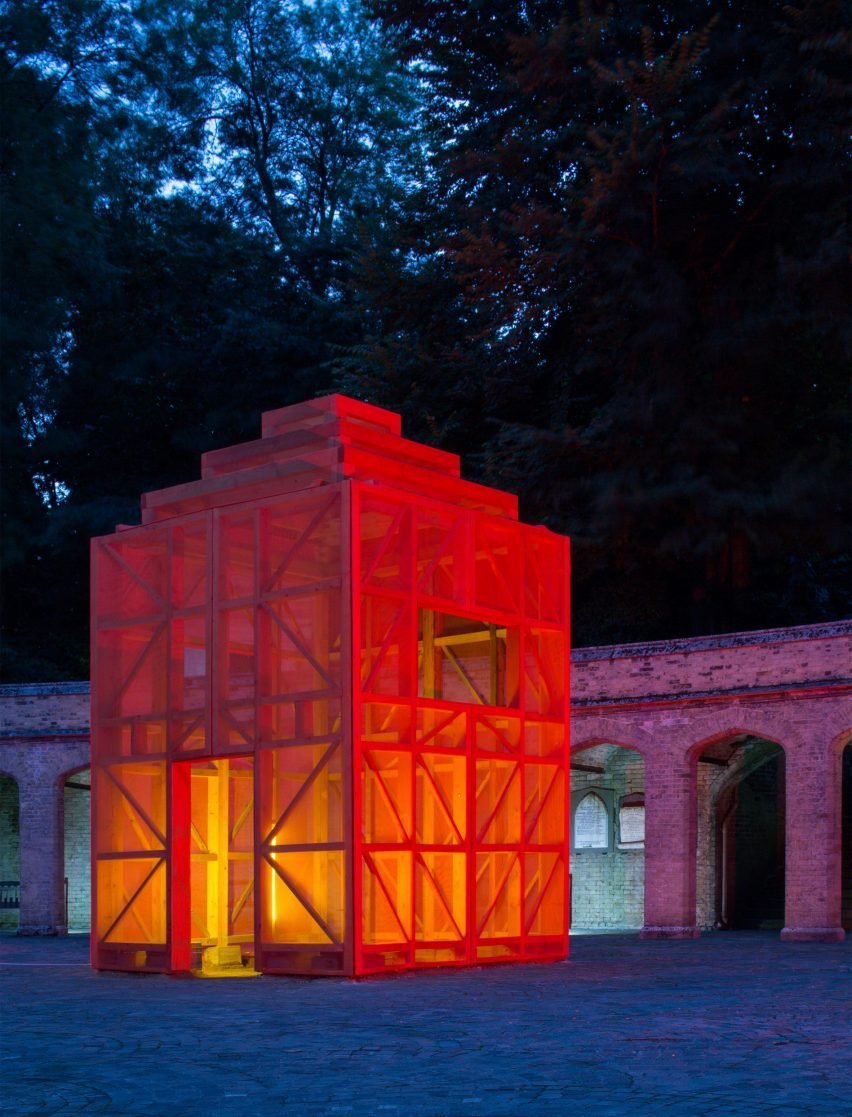Escaping the post-modern condition - or are we?
6th February 2022
We recently attended an online lecture hosted by Sam Jacob Studio’s Eddie Blake and titled The effects of the internet on architecture, the post-modern condition and how we can escape it.
Through a smorgasbord of precedents, Blake explored how internet culture may be affecting the way we view and experience architecture today.
Take the example of the unbuilt tomb originally designed by Adolf Loos for art historian Max Dvorák in 1921, which was later realised in 2016 in the form of a temporary pavilion by Sam Jacob Studio in Highgate Cemetery. The pavilion now sits dismantled in a shed in Somerset, however the building lives on through our screens, instantly available in your search engine next to Adolf Loos’s original visuals.
Blake was highlighting the new accessible permanence that the internet provides us. The pavilion no longer exists in its intended form in the ‘real world’. Yet through our screens, thanks to images uploaded by the pavilions architects as well as by chance by passers by, the pavilion can be enjoyed and can inspire future generations of architects and designers for an eternity, in an unlimited archive of what once was, but will now always be.
It’s also providing an accessibility for those who did not experience the pavilion in ‘real life’, during its intended built lifespan. Anyone with a decent internet access across the world, can now view the pavilion, and take enjoyment and inspiration from it.
But what are the effects of this new archive, of this invincible treasure trove of the unforgotten? The question remains, how is this new way of sharing, this access to an unlimited archive, effecting how we experience the physical world?
Blake also touched on how web-based apps such as Airbnb have influenced the design phenomenon coined by Financial Times journalist Kyle Chayka as “airspace”, which he describes as a condition, rather than a specific style. Digital platforms such as Foursquare and Airbnb, as well as an increased accessibility to design and architecture images on the internet, are producing a harmonization of tastes across the world. Airbnb for example, was established on the idea of authenticity, providing a vast range of options for one to choose from, however over time the interior aesthetics from Montreal to Munich have been filtered down into a “global anonymous chic”. Click on any city and you will find an array of white walls, trendy house plants and mid-century style furniture. The homogeneity of these spaces means that travelling between them is frictionless. Changing places can be as painless as reloading a website.
Design trends are inevitable; with an increase in accessibility, the internet has enabled a far greater sphere of influence. As architects and designers, whilst it is indisputably brilliant to have a world of precedents and inspiration at our fingertips as well as know that our creations can live on forever in the form of a web page, it can also feel like there has never been more pressure to consider the experiential outcome of our designs. Should we resist the airspace condition and strive for the new, or do we conform and accept that this is what the world wants to see?

